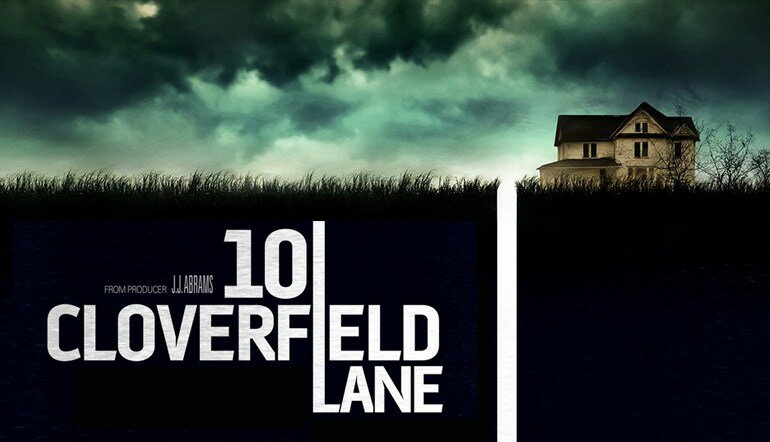Thrilling Characters Trump Sci-fi Tropes
by: Anthony Zangrillo
Dropping out of toxic air, the Cloverfield franchise makes an unexpected but welcomed return. Producer J.J. Abrams subverts audience expectations in presenting a compelling character piece in the backdrop of a larger alien invasion universe. This anthology model showcases the proper way to utilize resonating IPs. The film’s mysterious title will get curious audiences in the theater, but gripping performances supplemented by masterful direction will keep viewers on the edge of their seats.
10 Cloverfield Lane narrates a simple plot. Protagonist Michelle (Mary Elizabeth Winstead) suffers from a car accident and wakes up chained to a wall in the narrow confines of a room overshadowed by a giant blast door. Supposed Good Samaritan Howard Stambler (John Goodman) claims to have saved Michelle from the end of the world as a mysterious chemical agent has been released on America and possibly the world. Substantiating these claims, Emmet (John Gallagher Jr.) fought with Howard just to get to the safety of the bunker. As the movie progresses, audiences will constantly speculate about Howard’s true intentions, and his supposed role as a benevolent savior.
John Goodman is fantastic in this leading role. The usual supporting star fully embodies the confusing complexity of the survivalist Howard. Every snippet of dialogue provides further clues to the mysterious nature of this strange force. Even Goodman’s physical presence and mere facial reactions further his personality traits. Early on, Howard asserts his vice-grip control over the make-shift fallout shelter. This aggressive scene deteriorates Howard’s firm but friendly demeanor. In effect, this brutish depiction of Howard will constantly spring up in audience’s minds throughout the movie. Howard’s size and skills will obviously make him a threat, yet the film will play with the notion that he is a friend, who Michelle can trust in the wake of an apocalypse.
To balance Goodman’s uneasy performance, Winstead provides a calming center to the narrative. Her character evolves from skeptic to believer to heroine. The arc will engross audiences, as she attempts to understand her new, enclosed world. Early on, the film makes it abundantly clear that she is no damsel in distress. Multiple break-out attempts establish her as a fiery skeptic, unwilling to accept the ludicrous notion of a toxic wasteland. Her bravery in the face of despair and desolation makes the film’s climax a worthy, thrilling reward. Praise belongs to Winstead for continually conveying a multitude of emotions in a variety of powerfully silent scenes.
Rounding out the bunker’s residents is Emmet. John Gallagher Jr. completely transforms into a naïve, but honorable character. Most audiences will be lulled into trusting the weakly Emmet and his broken arm. Sexual tensions appear to play an important role early on, yet thankfully, the film does not take an unnecessary apocalyptic romance detour. Sincere friendship elevates Winstead and Gallagher Jr.’s relationship. It is always apparent that Howard can never truly join this circle of trust, which will complicate matters.
Dan Trachtenberg is phenomenal in his feature film directorial debut. The film’s cold open seamlessly explains the conflict and eventual regret within Michelle’s life. Trachtenberg masterfully transitions from this heartbreaking scene to the title credits in a unique and magnifying way. This stylistic choice emphasizes the presence and absence of sound within the film genre, while preparing audiences for a thrill ride. Yet surprisingly, the film manages to insert a great deal of humorous dialogue into the setting. Time and again, the film’s protagonist connects with the audience by pointing out the utter exhaustion of her situation. Additionally, the “I Think We’re Alone Now” montage will stick with viewers long after the end credits roll. Throughout the film, camera angles and hidden clues propel an eerie and mysterious tone, amplified by these unknown characters. For example, a ventilation scene will make audiences feel claustrophobic in the spacious theater. Providing a slow and tense scene in this setting will have an immense payoff toward the film’s climax.
The final scene of this film is the most interesting for fans obsessed with the Cloverfield universe. This movie does have connections to the previous entry, while at the same time laying the groundwork for a larger world, beyond the bunker. With a shaky cam wink to the audience, a new threat surfaces providing some horror monster scares (albeit, for only the most timid of audience members). Even these scenes are handled with so much care and grace that it never devolves into a B-movie slasher chase.
An additional amount of praise should extend to the film’s marketing campaign. Even though the film has a simple premise, the trailers left the plot to the viewer’s imaginations, providing just enough information to attract ticket sales. One of the pivotal scenes in the trailer is a sneaky swerve, which will delight many viewers hoping this movie never ends.
10 Cloverfield Lane is a delightful and mysterious treat in an age of in-depth marketing campaigns that unwrap movies before the title credits appear on screen. This film should galvanize filmmakers in crafting their individual stories within the larger world of other franchises. Captivating human characters trump movies featuring otherworldly sci-fi creatures. With this tenet guiding the film, 10 Cloverfield Lane is a must-see thriller.
Score: 8/10








